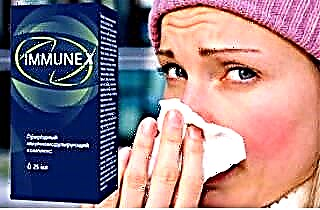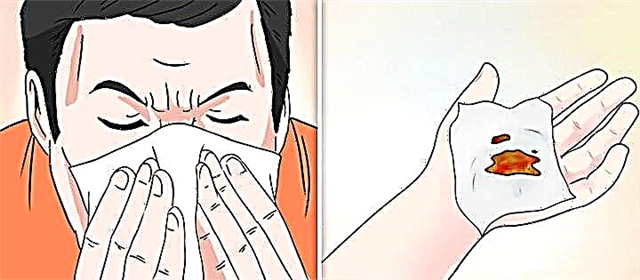Side effects of pressure pills
Any medicinal substance (synthetic or from natural raw materials), no matter how high-quality and expensive, in certain circumstances has a side effect (PD).
PD is any reaction to a drug that occurs during use that harms the body. Symptoms of intolerance develop with a therapeutic concentration of the drug in the blood (taking a standard dose).
Some unwanted effects cannot be prevented (various allergies).
PD risk groups:
- children, elderly patients, pregnant women;
- patients with liver and kidney damage;
- patients with a complicated medical history;
- the use of three to four or more drugs;
- people who use drugs for a long time;
- alcoholic patients, drug users, smokers.

All types of PD are divided into seven groups:
- Allergic reactions:
- Immediate type - manifests itself when the medicine is first used.
- Cumulative - gradual allergization of the body.
- Toxic:
- An absolute overdose is the introduction of doses into the body that significantly exceed the therapeutic ones.
- Relative - the accumulation of an active substance in the body, due to the failure of the metabolic and excretion systems.
- Weakening of immune responses.
- Genetically determined enzymatic pathology - the absence of an enzyme involved in the transformation of a drug. In such cases, the effectiveness of medicinal substances changes significantly.
- Withdrawal syndrome is a significant deterioration in the condition after an abrupt discontinuation of a drug.
- Change in the degree of effectiveness of the drug throughout the day, week, month, year.
- Complications arising from the interaction of several medicinal substances.
Any medicine can cause drug allergies!
Types of allergic reactions:
- Mild: itching, urticaria, vasomotor rhinitis, Quincke's edema. Signs often go away after a few days of taking antiallergic medications.
- Moderate severity: dermatitis (eczematous, exfoliative), serum sickness, arthritis, myocarditis.
- Severe allergies: anaphylactic shock, Lyell's syndrome, acute hemolytic anemia, immune damage to internal organs, joints, muscles, skin.
To control blood pressure, the following groups of medicinal substances are used:
- diuretics (loop, thiazide, potassium-preserving);
- calcium antagonists (AA);
- calcium channel blockers (CCBs);
- ACE inhibitors;
- β-blockers (BB);
- angiotensin II receptor blockers (ARBs, sartans).
None of the drugs can be awarded the title of "pills for high blood pressure without side effects."
Each group of antihypertensive drugs has a list of contraindications and side effects.
According to the frequency of occurrence and danger, they are divided into:
- PD type A - common (> 1: 100). The severity and likelihood of occurrence are dose dependent.
- Type B PD - rare cases (<1: 1000) due to an immune or allergic response. There is no connection with the dose, the probability of death is high.
- PD type C - rarely occur during long-term treatment (dependence, withdrawal syndrome, drug accumulation, tolerance).
- PD type D - rare consequences delayed in time. Carcinogenic effect, effects on the fetus during pregnancy, problems with the reproductive system.
| Group of antihypertensive drugs | Name | Doses most likely to cause PD | Frequent types of PD |
|---|---|---|---|
| Diuretics | "Hydrochlorothiazide" | > 100 mg / day | Dehydration, imbalance in water and electrolyte balance, lowering blood pressure, arrhythmias, photosensitivity, allergies |
| "Indapamide" | > 5 mg / day | ||
| "Furosemide" | > 120 mg / day | Dehydration, electrolyte disturbances, arrhythmia, hypotension | |
| "Torasemid" | > 200 mg / day | Electrolyte imbalance, muscle cramps, frequent urination, allergic reactions | |
| "Veroshpiron" | > 200 mg / day | Hyperkalemia, arrhythmias, decreased libido, impotence, gynecomastia | |
| β-blockers | "Bisoprolol" | > 10 mg / day | Bradycardia, vertigo, migraines, increased circulatory failure, decreased blood pressure, nausea, bronchospasm, heart block, sleep disorders, depression |
| "Atenolol" | > 100 mg / day | ||
| Nebivolol | > 5 mg / day | ||
| "Metoprolol" | > 200 mg / day | ||
| "Carvedilol" | > 50 mg / day | ||
| Calcium antagonists | "Verapamil" | > 360 mg / day | Bradycardia, AV block, decreased blood pressure, angina pectoris, dizziness, hot flashes, tinnitus, runny nose, abdominal pain, nausea, edema, constipation |
| Diltiazem | > 240 mg / day | ||
| Calcium channel blockers | "Amlodipine" | > 10 mg / day | Headaches, drowsiness, vertigo, visual impairment, ringing in the ears, hot flashes, palpitations, angina pectoris, cough, rhinitis, abdominal pain, nausea, leg edema, muscle cramps, allergies, impotence |
| "Lerkamen" | > 20 mg / day | ||
| "Nifedipine" | > 40 mg / day | ||
| ACE inhibitors | Enalapril | > 20 mg / day | Dizziness, hypotension, weakness, tachycardia, dry cough, shortness of breath, nausea, diarrhea, abdominal pain, rashes, angioedema, itching, asthenia, blurred vision, electrolyte imbalance, loss of appetite |
| "Captopril" | > 100 mg / day | ||
| "Lisinopril" | > 40 mg / day | ||
| "Perindopril" | > 8 mg / day | ||
| Ramipril | > 10 mg / day | ||
| "Trandolapril" | > 8 mg / day | ||
| Angiotensin II blockers (sartans) | Valsartan | > 360 mg / day | Vertigo, cough, hypotension, epigastric pain, asthenia, urticaria |
| Irbesartan | > 300 mg / day | ||
| "Candesartan" | > 32 mg / day | ||
| "Lozap" | > 100 mg / day | ||
| Telmisartan | > 80 mg / day |
When and what is the best replacement for the drug?
With the development of side effects during treatment with pressure pills, the first thing to do is consult a doctor. Only a specialist will assess the symptoms and select an adequate replacement for the drug, which is less likely to cause PD.
There is no cure for hypertension without side effects. In each specific case, the patient is more suitable for one or another drug group for blood pressure control.
For PD during diuretic treatment:
- reduce the total dose of the medication;
- correct electrolyte imbalance (diet, "Asparkam" or "Panangin");
- replace with a diuretic of the neighboring subgroup (thiazide for loop or potassium-preserving).
With intolerance to β-blockers:
- switch to highly selective representatives (Nebilet, Carvedilol);
- replace with ACE inhibitors or angiotensin-II blockers.
One of the types of PD drugs is “withdrawal” syndrome. An abrupt discontinuation of non-selective β-blockers in a patient causes an increase in blood pressure, up to the development of a hypertensive crisis and the complications caused by it (encephalopathy, heart attack, intracerebral hemorrhage). If it is necessary to cancel BB, the optimal tactics is to stepwise decrease the dose or switch to a cardioselective β-AB.
Calcium channel blockers can be replaced with Ca antagonists2+.
 While taking CCB and AK in patients with concomitant atherosclerosis and age-related lesions of the circulatory bed, the “steal” syndrome is observed. Medicines of this group, improving blood supply in areas with a well-developed vascular network, cause blood outflow from organs with sclerosed arteries, which do not respond well to vasodilation. Clinically, this is manifested by myocardial ischemia - attacks of angina pectoris.
While taking CCB and AK in patients with concomitant atherosclerosis and age-related lesions of the circulatory bed, the “steal” syndrome is observed. Medicines of this group, improving blood supply in areas with a well-developed vascular network, cause blood outflow from organs with sclerosed arteries, which do not respond well to vasodilation. Clinically, this is manifested by myocardial ischemia - attacks of angina pectoris.
If you are intolerant of ACE inhibitors, your doctor may prescribe a medication from the group of angiotensin-II blockers.
The main direction in the treatment of hypertension is a combined regimen of medications from different groups. This allows you to reduce the therapeutic dose of each of them, and hence the likelihood of overdose, to level side effects and increase the patient's adherence to the selected treatment.
Unfortunately, it is possible to control blood pressure with one drug only in a few cases:
- in the early stages of the development of hypertension;
- in young patients;
- in the absence of concomitant pathology;
- with "mild" hypertension, when blood pressure is increased slightly.
In all other cases, a combination of two to five drugs from different groups is required, with careful selection of the dose and constant monitoring of the functions of the internal organs.
Treatment with several drugs at once (separately or together in a tablet) provides a better antihypertensive effect, rapid achievement of the target blood pressure level, and prevention of cardiovascular complications.
Possible combinations of drugs to lower blood pressure:
- The most rational:
- Diuretic + ACE inhibitors - "Berlipril Plus", "Enap N, HL", "Tritace Plus", "Ko-Diroton", "Co-Prenessa", "Lizoretic", "Noliprel".
- Diuretic + BB - "Combiso", "Nebilet", "Tenoric", "Eurobisoprolol".
- Diuretic + ARA (sartan) - Vazar N, Valsakor N, Diocor, Difors, Co-Diovan, Lozap Plus.
- BB + AK - Beta-Azomex, Tenochek, Logimax.
- IAPF + BKK (or AK) - Bi-Prestarium, Amlessa, Equator, Lerkamen apf.
How to prevent side effects?
To date, drugs for pressure without side effects have not been invented. The newest antihypertensive drugs are generally better tolerated by patients. The original tablets use high quality raw materials and a minimum of additives. Only a small fraction of generics (cheaper "copies") have a therapeutic equivalent that is close to the original.
To prevent PD of drugs for hypertension, you must adhere to the rules:
- the drug should be prescribed only for clear indications, in optimal doses;
- give preference to enteral forms (tablets, drops);
- do not use several medicines with the same mechanism of action at the same time;
- warn the doctor about all medications the patient is taking;
- determine the functional state of the liver, kidneys, blood system, gastrointestinal tract;
- give preference to original medicines;
- carefully study the instructions for the drug, strictly adhere to the dosage indicated by the doctor, do not independently replace the tablets with others.
| Group of drugs | Side effect | Risk group | Symptoms | Elimination and prevention methods |
|---|---|---|---|---|
| Diuretics | Dehydration (dehydration) | Circulatory failure, liver cirrhosis, kidney disease, old age | Orthostatic hypotension, tachycardia, dry mouth | Adjust the dose, increase the amount of fluid you drink |
| Hypokalemia (↓ K) | Women, elderly patients, hyperaldosteronism | Arrhythmia, extrasystole |
| |
| Hyperkalemia (↑ K) during treatment with "Veroshpiron" | Elderly patients with kidney disease, diabetes mellitus | Tachycardia, decreased muscle tone, arrhythmias | Taking loop diuretics, avoiding K-rich foods | |
| Hypomagnesemia (↓ Mg) | Alcoholism, old age | Rhythm disturbances | "Panangin", "Asparkam" | |
| Hyponatremia (↓ Na) | Insufficient blood circulation, rapid elimination of edema, salt-free diet | Decreased urine volume | Reduce the dose of a diuretic, the amount of fluid you drink, "Panangin", "Asparkam" | |
| Hypocalcemia (↓ Ca) | Long-term loop diuretic therapy | Paresthesias, muscle cramps, caries, cataracts, dry skin, brittle hair and nails | Diet enriched with Ca and vitamin D, calcium salts | |
| Zinc deficiency | Liver cirrhosis, diabetes mellitus | Decreased scent, taste, erection | Preparations containing this trace element | |
| An increase in the concentration of uric acid, | Gout | Increased number of gout attacks | Diet, "Allopurinol" | |
| blood cholesterol | Elderly patients, women in menopause | Mg and K preparations, a combination of a diuretic with CCB, ACE inhibitors | ||
| Impaired carbohydrate tolerance | Diabetes | Hyperglycemia | Preparations K | |
| Allergy | Intolerance to sulfonamides | Urticaria, vasculitis, angioedema | Withdrawal of therapy, antihistamines | |
| β-blockers | Exacerbation of heart failure, drop in blood pressure, AV block | Advanced age, decreased heart function | Weakness, dizziness, drop in blood pressure, tachycardia | Dose reduction, drug withdrawal |
| Bronchospasm | Asthma, COPD | Dyspnea | Cancellation of the drug | |
| Hyperlipidemia | Diabetes | Increased blood glucose | ||
| Individual intolerance | Headaches, insomnia, nightmares, nausea, decreased libido, gynecomastia, urticaria, itching, blurred vision, insufficient tear production, dry mouth | |||
| Calcium antagonists | Vasodilation | Peripheral artery disease, ischemic heart disease, atherosclerosis | Edema of the lower extremities, vertigo, tinnitus, headaches, falling blood pressure, "hot flashes", angina attacks (up to a heart attack) | Cancellation of the drug |
| Sinoatrial, AV blockade | Disorders in the conducting system of the myocardium | Arrhythmias, interruptions in the work of the heart | ||
| Individual intolerance | Nausea, epigastric discomfort, subcutaneous hemorrhage, myalgia, gingival hyperplasia | |||
| Allergic reactions | Quincke's edema, urticaria, anaphylaxis | Rash, itching, rhinitis | Cancellation of therapy, antihistamines | |
| Calcium channel blockers | Vasodilation | Peripheral artery disease, atherosclerosis, coronary heart disease, circulatory failure | Falling blood pressure, angina attacks, increased heart rate, dizziness, edema, hot flashes, skin redness | Cancellation of the drug |
| Individual intolerance | Hepatitis, pancreatitis, anemia, gingival hypertrophy | Decreased vision, ringing in the ears, epigastric pain, dry mouth, increased nighttime urination, weight gain, baldness, myalgia | ||
| Allergic reactions | Facial redness Quincke's edema, urticaria, anaphylaxis, dermatitis | Rash, itching, rhinitis | Cancellation of the drug, antihistamines | |
| ACE inhibitors | Hypotension, angina pectoris, arrhythmia | Stage III heart failure, high doses of Furosemide (> 80 mg), hyponatremia, hyperkalemia, renal dysfunction, atherosclerosis, renal artery stenosis, cor pulmonale | Chest pain, decreased blood pressure, tachycardia | |
| Cough | Chronic respiratory disease, female | Dry hacking cough, throat irritation | Selection of another antihypertensive medication | |
| Individual intolerance | Hepatitis, liver failure, pancreatitis, hypoglycemia, peptic ulcer | Migraines, depression, dizziness, asthenia, nausea, jaundice, epigastric pain, hair loss | Cancellation of the drug | |
| Allergic reactions | Urticaria, angioedema, anaphylaxis | Itching, rashes, redness of the skin | Cancellation of the drug, antihistamines | |
| Angiotensin II blockers (sartans) | Decreased function of metabolic organs and excretion of medicinal substances | Diabetes mellitus cirrhosis of the liver, renal failure | Epigastric pain, jaundice, increased creatinine | Dose reduction, withdrawal of therapy |
| Individual intolerance | Vertigo, cough, myalgia, asthenia | Cancellation of the drug | ||
| Allergic reactions | Angioedema, urticaria | Rash, itching |
The likelihood of PD also increases with the combination of pressure pills with other drugs.
| Antihypertensive drug | Another medicine | Clinical effect |
|---|---|---|
| Any pressure medicine | Non-steroidal anti-inflammatory | Weakening of the hypotensive effect |
| BB | AK | Myocardial ischemia |
| Carvedilol, Labetalol | "Cimetidine", "Quinidine" | Bradycardia, conduction disorder |
| Verapamil, Diltiazem | Digitalis preparations ("Digoxin") | Bradycardia, arrhythmia, glycosidic intoxication |
| "Nifedipine" | ||
| "Nifedipine" | A-blockers | Orthostatic hypotension |
| IAPF, ARB (sartans) | Potassium-sparing diuretics | Hyperkalemia |
| IAPF, BRA | High doses of diuretics | Hypotension, renal failure |
Dangerous combinations of antihypertensive drugs:
- any two drugs from the same group (for example, an ACE inhibitor - "Enalapril" with "Perindopril");
- β-blockers with AK;
- β-blockers with CCB.
Unwanted drug combinations (high risk of side effects):
- β-blockers with ARBs (sartans);
- β-blockers with ACE inhibitors;
- potassium-sparing diuretics with ACE inhibitors.
Long-term treatment with drugs for high blood pressure in some patients is addictive (tolerance):
- relative - a decrease in absorption, acceleration of metabolism and excretion reduce the plasma concentration of the drug;
- absolute - tissues and organs become less sensitive to the effects of tablets.
In the case of relative tolerance, the effectiveness of treatment can be restored by increasing the daily dose, the absolute one requires discontinuation of the drug with the appointment of a drug with a different mechanism of action.
Conclusions
A lot of research is aimed at developing a pill for hypertension without side effects.
But even with a modern pharmacological assortment, the doctor can choose the combination and dosage of drugs that will ensure a stable decrease in blood pressure and the absence of side effects.
For better control of blood pressure and the use of lower doses of antihypertensive drugs, it is recommended to combine taking pills with non-drug methods of lowering blood pressure (normalization of weight, physical activity, balanced nutrition, minimizing stress, avoiding alcohol and smoking).



